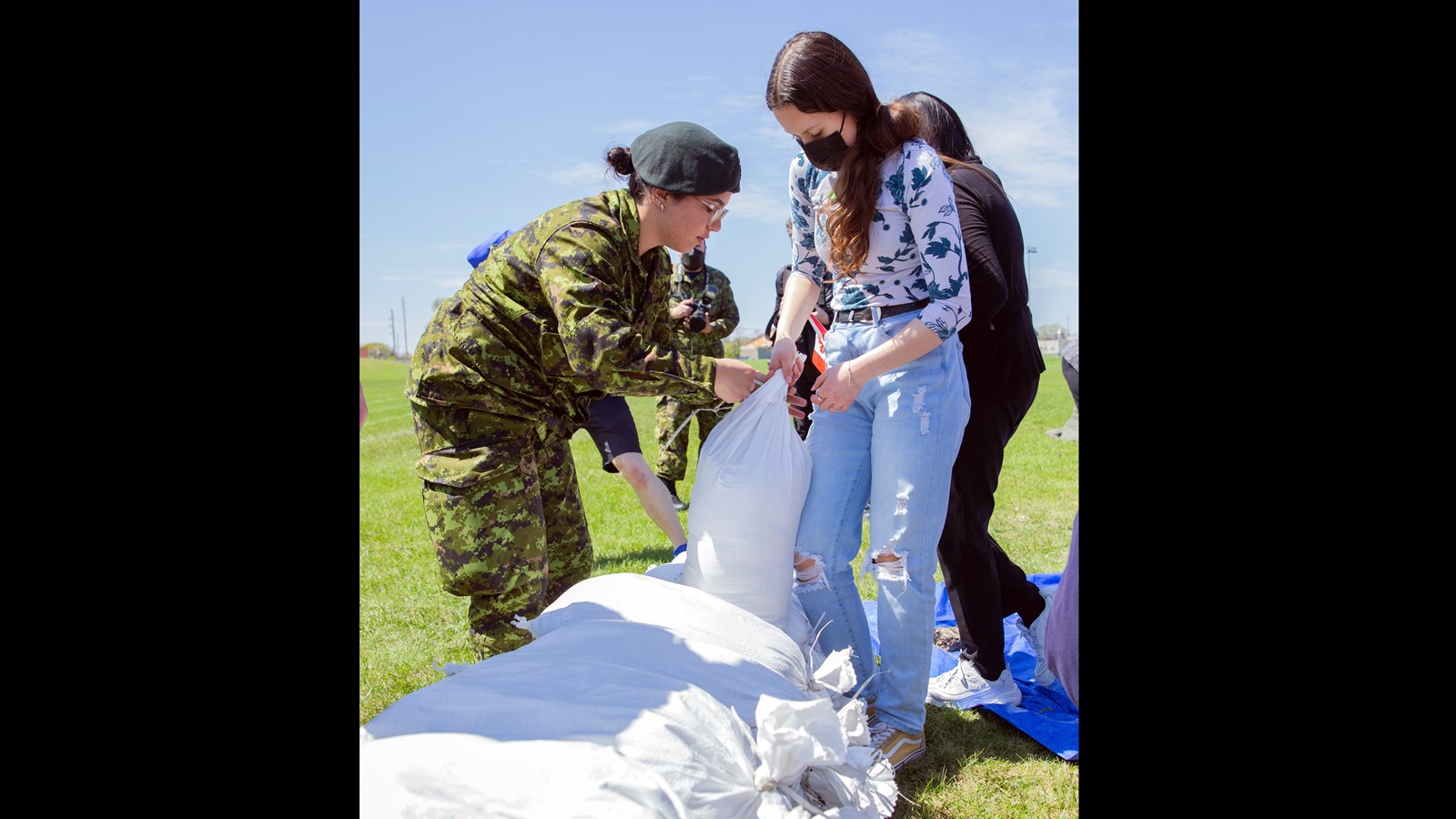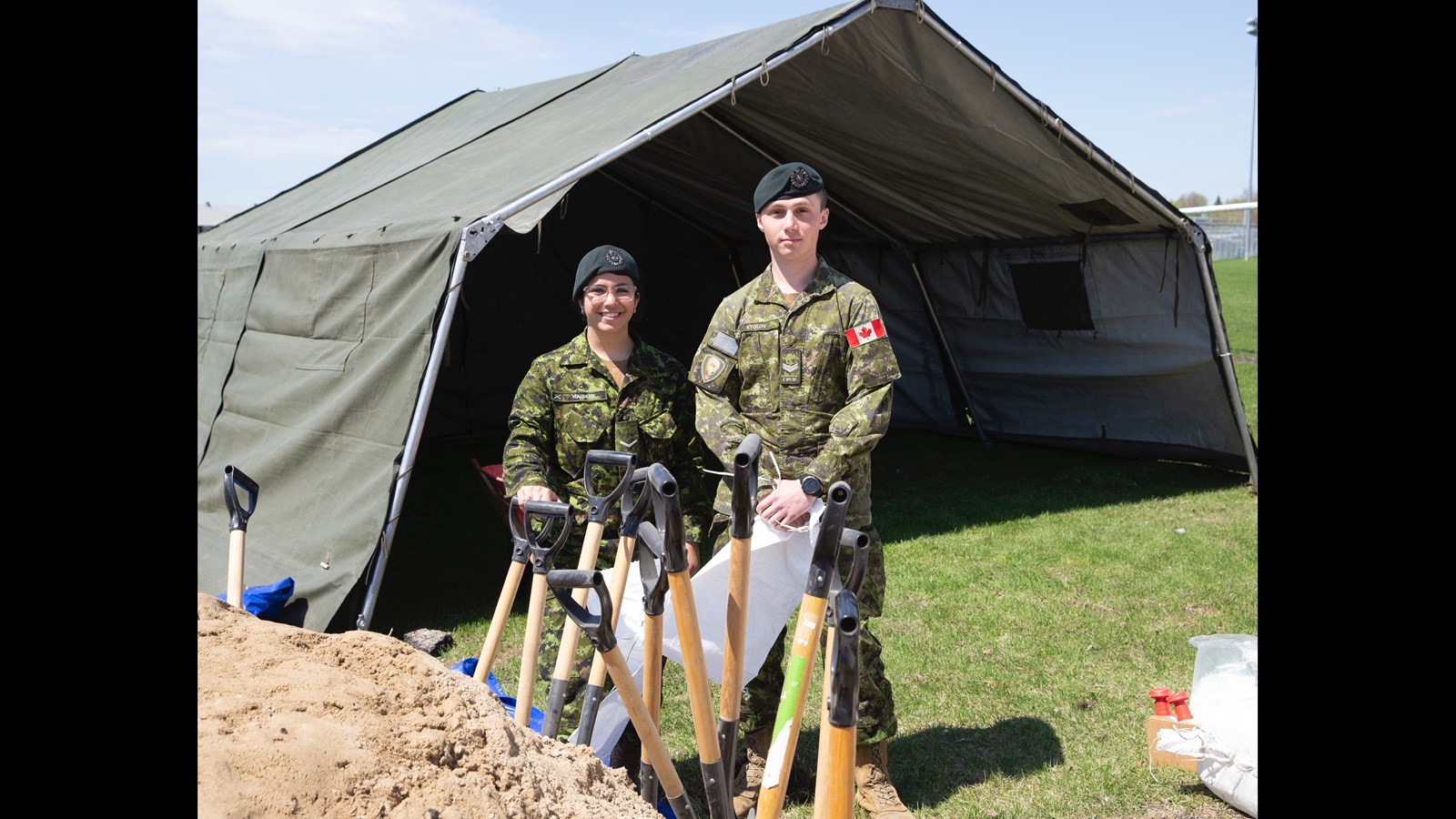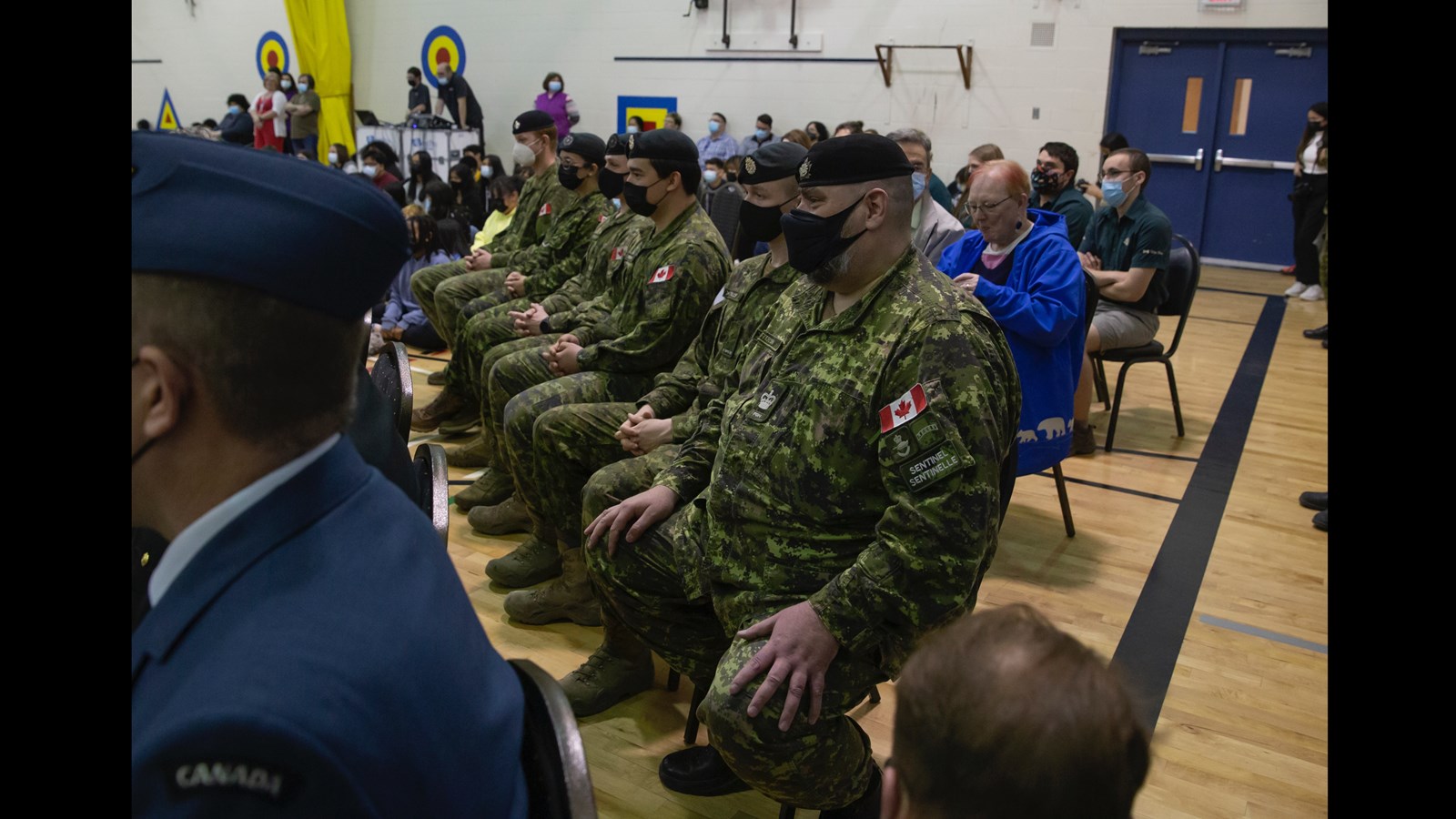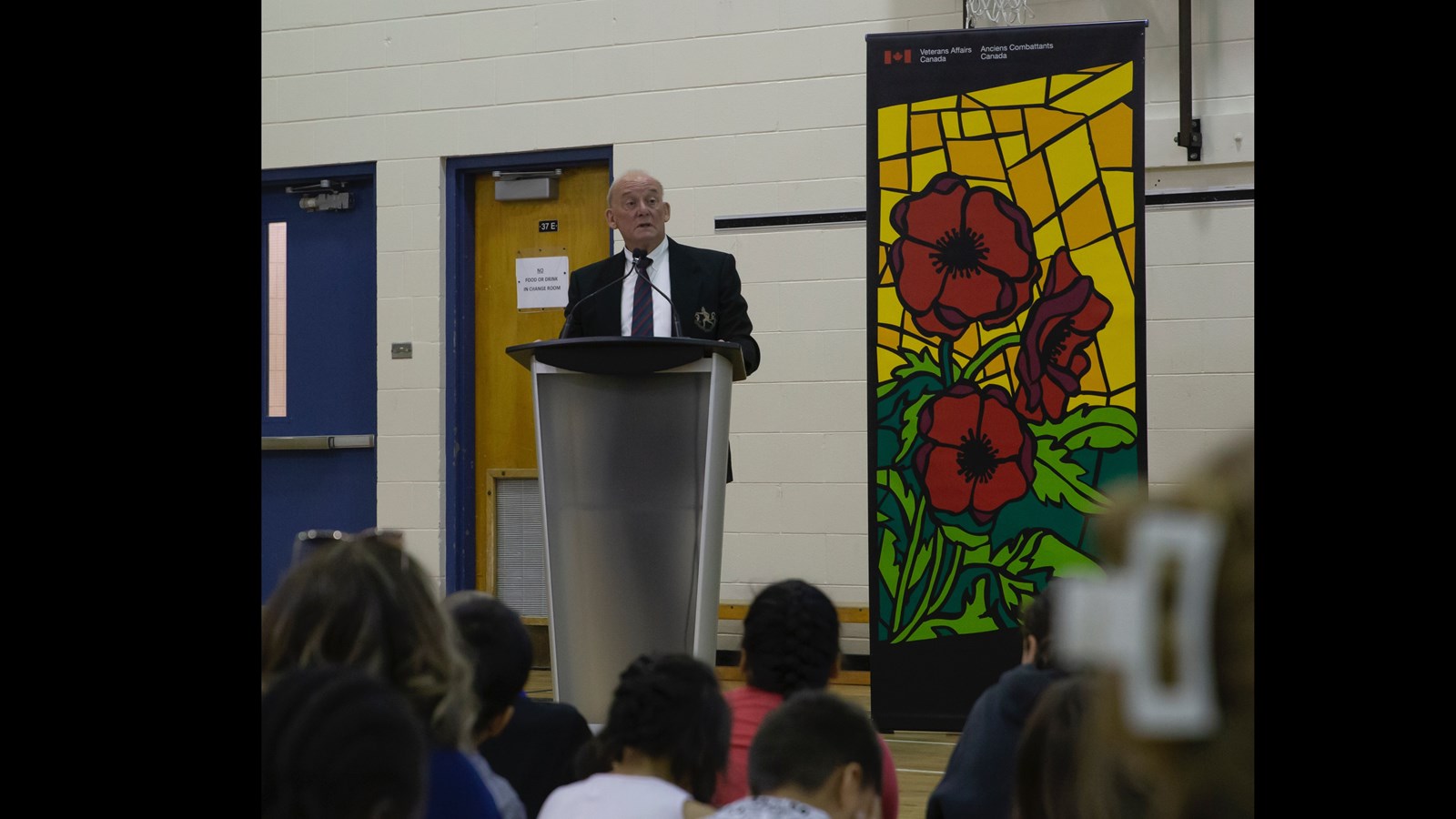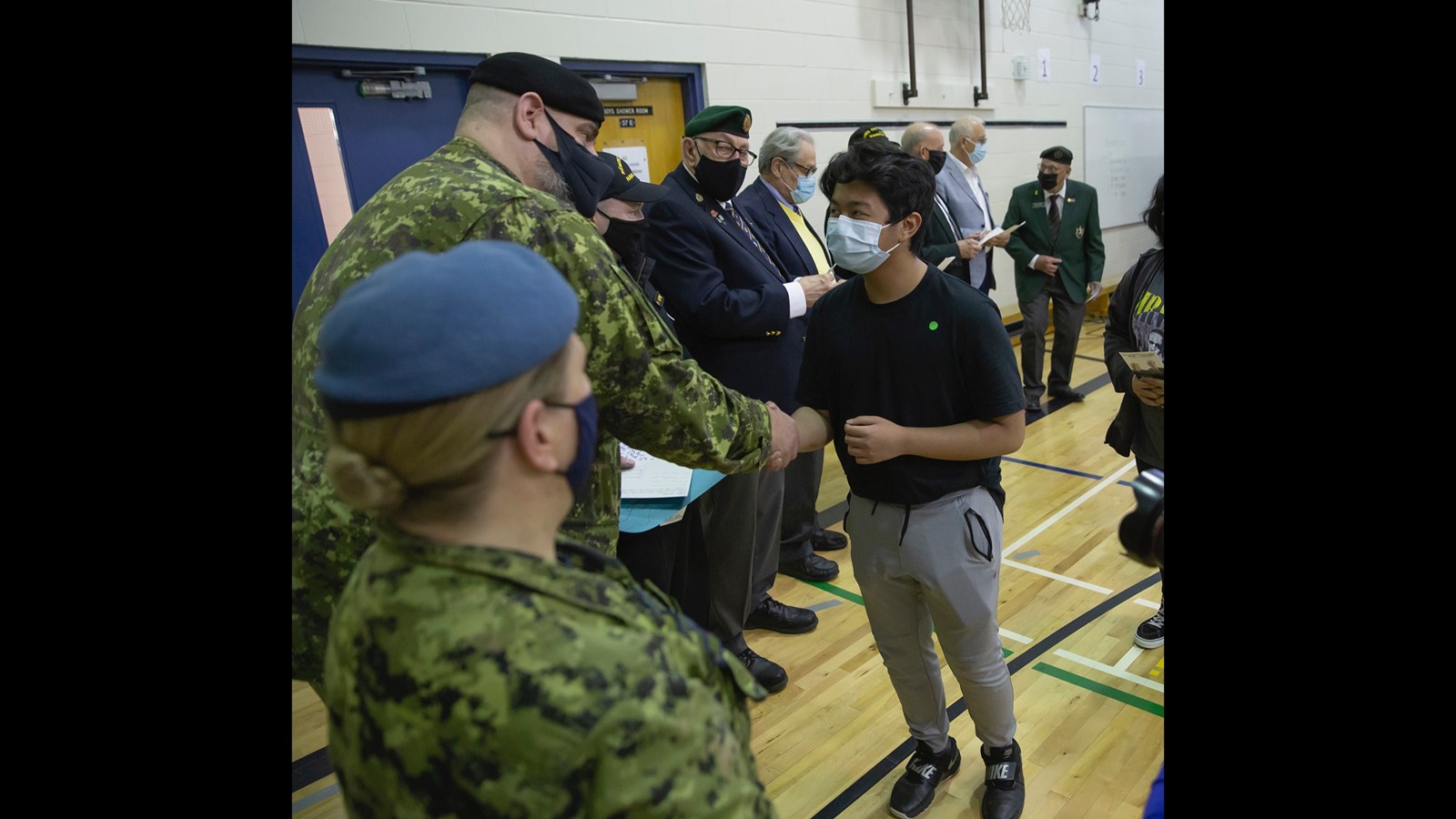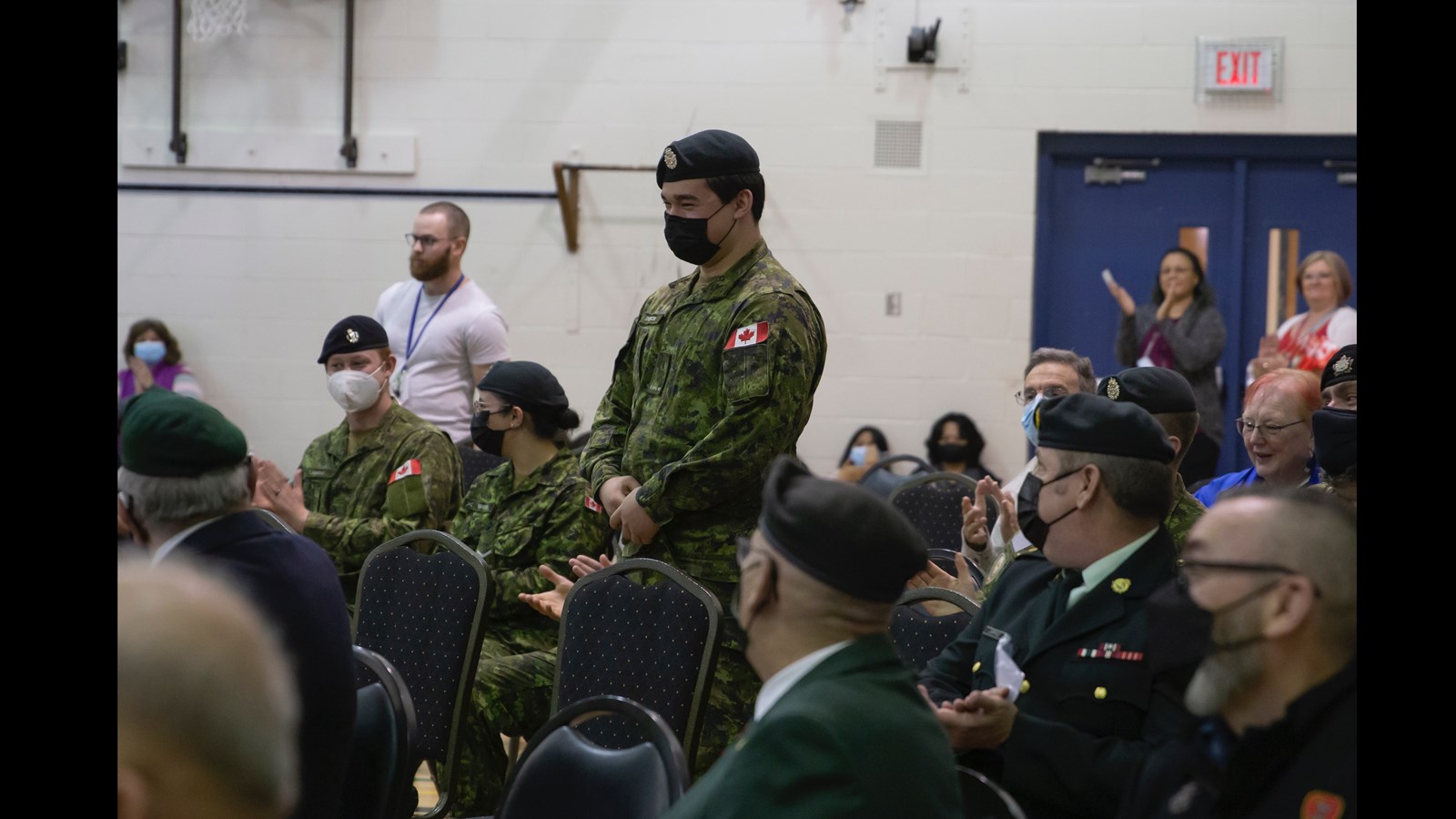Remembering Operation Assistance and the Flood of the Century
June 3, 2022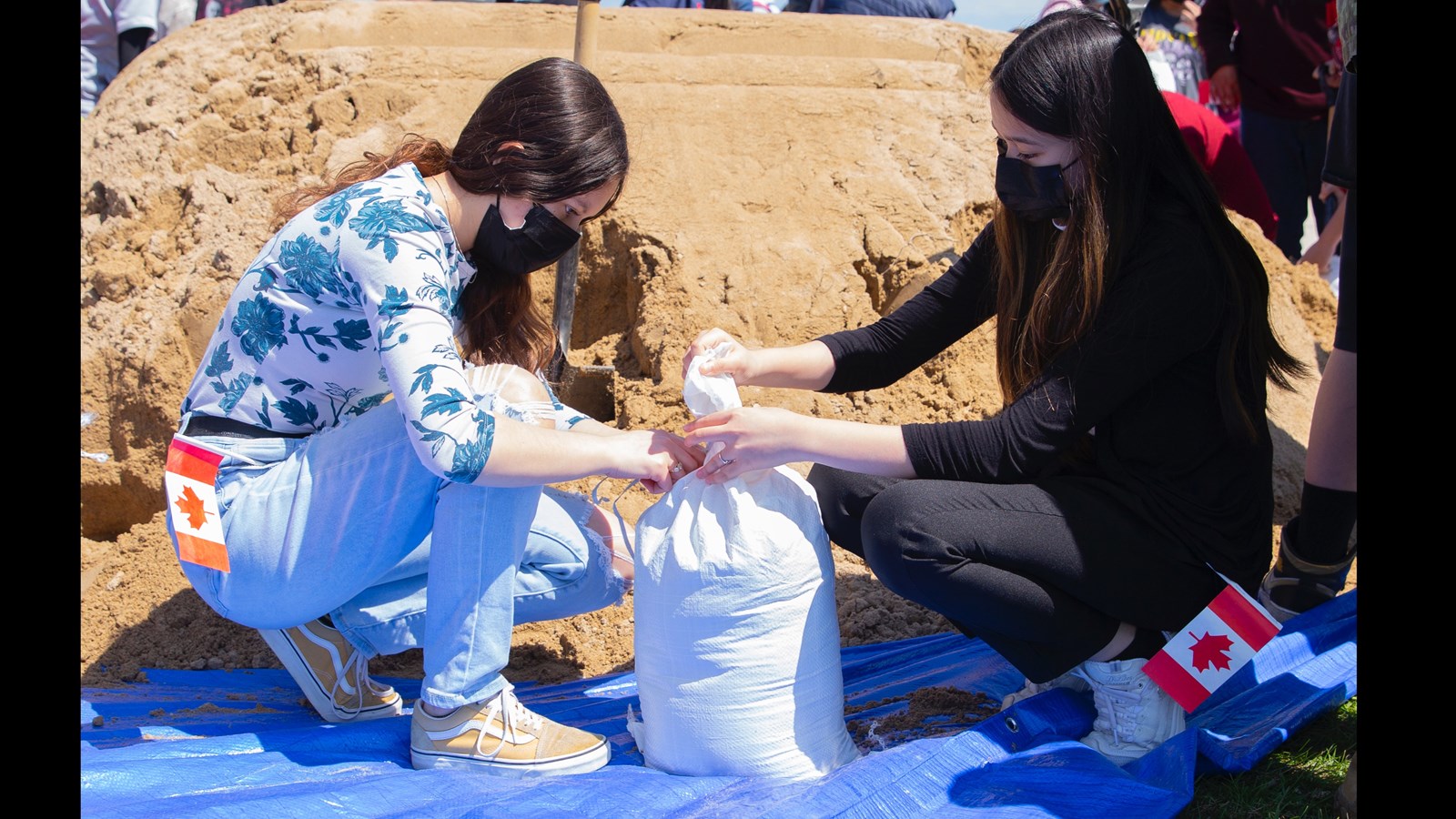
As Manitobans in most parts of the province deal with the wettest spring on record, it brings to mind another major weather event from a quarter of a century ago.
This spring marks the 25th Anniversary of the Flood of the Century in Manitoba. In 1997, the Red River valley experienced its worst flooding in over 100 years. Over 25,000 Manitobans were evacuated due to rising waters, and approximately 1,000 homes were damaged. The Red River would reach a crest of 7.5 metres (24.5 feet) at the James Avenue Pumping Station in Winnipeg.
Coming to the aid of Manitobans were over 8,500 Canadian Armed Forces personnel, who carried out evacuations and worked to prevent flood damage through sandbagging, dykes and other measures. The mission was called Operation Assistance and lasted 36 days.
On May 26, Shaughnessy Park School hosted Veterans Affairs Canada to mark the 25th anniversary of the 1997 flood and the Canadian military response to the disaster. On hand were some of the veterans who served in Operation Assistance.
Among the veterans present was Maj.-Gen. (Ret’d) Dennis Tabbernor, former Commander of the 38 Canadian Brigade Group.
Maj.-Gen. Tabbernor noted that military personnel started referring to the Red River as “The Red Sea” as the waters rose.
As it became obvious that the flood was going to be enormous, a small army headquarters was deployed to Manitoba, along with approximately 600 infantry personnel from 1 Canadian Mechanized Brigade Group, which was stationed in Edmonton. They were soon joined by the 38 Canadian Brigade Group of Winnipeg—a reserve army formation of the 3rd Canadian Division that were under the command of Maj.-Gen. Tabbernor at the time. Another 1,000 soldiers from Wainwright, Alberta were also brought in prior to their deployment for peacekeeping in Bosnia.
The 2 Canadian Mechanized Brigade Group was in the middle of travelling from headquarters in Petawawa, Ont. to Gagetown, New Brunswick for a training exercise when Brig.-Gen. Rick Hillier made the decision to divert the troops and equipment to Manitoba.
Additionally, the Canadian Navy sent all of its small boat reserve units from across Canada to the province.
“These small boats proved invaluable in helping navigate the shallow waters of the flooded areas, supporting the evacuation, and supplying those trapped by the floodwaters,” Maj.-Gen. Tabbernor said.
The Canadian Air Force brought in helicopters to help move evacuees and to provide supplies to those who chose to stay with their homes; the CAF also brought in long-range submarine hunter aircraft.
“These aircraft could stay in the air for long periods of time…they could also drop parachute flares that could turn night into day,” Maj.-Gen. Tabbernor said. “As we were building dykes, seven days a week, 24-hours a day, these planes would fly over and drop these parachute flares so the soldiers and civilians that were working on the dykes could see what was happening. So in some parts of Manitoba, the sun never set.”
All told, Operation Assistance saw the deployment of over 8,500 personnel, 2,850 vehicles, 131 boats and 34 aircraft to Manitoba.
“This was the biggest military deployment of personnel and equipment since the Korean War in the early 1950s…it was huge,” Maj.-Gen. Tabbernor said.
Shaughnessy Park Principal Tanis Westdal said students and staff were honoured to help recognize the contributions of veterans in Operation Assistance.
“Members of the military spent long, long days soaking wet, muddy and cold, working side-by-side with the people of Manitoba to help the best they could,” Ms. Westdal said. “Whether it was building walls with sandbags, to patrolling them overnight looking for leaks, they worked tirelessly for our province. Many of you in this room, you would have looked at the videos that were sent out to your teachers in preparation for today, of Manitobans cheering on the military and saying thanks for the work they did. We have some of those people sitting with us here right now. What I want us to do, in good Shaughnessy Park style, is to take a minute to say thank you to them for their part in the mission.”
Students gave the veterans several enthusiastic cheers, as well as presenting them with personalized thank you cards and artwork.
Following the assembly in the Shaughnessy Park gymnasium, students and staff took part in gallery walks and workshops that included an outdoor sandbagging station.

